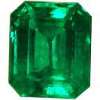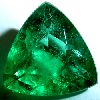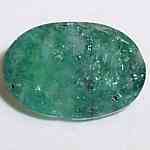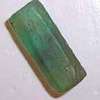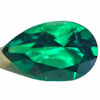
I once heard a cable TV Gem dealer say “Emerald is not as hard as other Beryls like Aquamarine.” Comments like that are part of what disgust me about many of those programs. Knowledge and experience are limited yet they reach a wide audience creating false impressions of gems, sources, and enhancements. What she meant to say was that Emerald is often “more fragile” or “less durable” than “some” Beryls like Aquamarine. That is generally true and I’ll talk about why that is the case. I’ll also tell you a bit about what makes an Emerald valuable and how enhancements affect their value. In addition, I’ll point out which enhancements are easy to spot and which are not.
Let’s start with why Emerald is generally “more fragile” than Aquamarine. Both being Beryl, we all know they have the same basic physical and chemical properties. Having the same hardness would lead you to believe they have the same durability. Why then does Emerald have a reputation of fragility? It’s the seemingly unavoidable and abundant flaws and inclusions. It’s those inclusions that make them more vulnerable to physical and chemical damage. So don’t let anyone tell you Aquamarine is harder than Emerald. They are the same. Be prepared, however, to defend Emerald’s fragility with proper care and handling.
The flaws in Emerald that lead to its fragility are also most often the avenue for enhancements. With pressure, dyes, oils, glass, and epoxies can be forced into the cracks to enhance the strength and beauty of the gem. Any properly disclosed enhancements are tolerable. Some are expected while others are only accepted.
Clear oils are commonplace and generally expected. Assume all Emeralds have been treated with clear oil unless told differently. This is one excellent reason to avoid any cleaning that would absorb or displace these oils.
Dyes are generally not accepted. That is why they are usually not disclosed, so be careful. Usually you can see evidence of dye in the cracks and fissures. Green veins are signs of accumulated dye in these areas.
Glass and epoxies can be forced into cracks to improve the strength of a gem. Many different techniques are available and there is much controversy over which are acceptable and which are the best. Some believe that permanent enhancements are the best while others believe a reversible enhancement preserves the inherent beauty of the gem.
As far as value, it seems obvious that a natural unenhanced Emerald of equal beauty to an enhanced one would be much more expensive. But what about an enhanced gem that is much nicer? Where is the crossover point? This discussion could go on forever. My advice is to buy a gem you love regardless of its enhancements as long as you feel it has been properly disclosed. Remember to expect oiling and treat your gem as if it has been oiled. Either way, it will extend the life of your gem.
